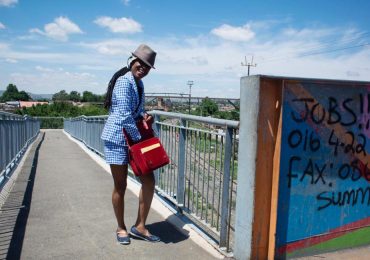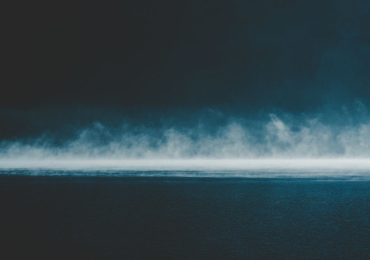On Sundays, in downtown Johannesburg, on the edge of Hillbrow, encroaching into Braamfontein, queues of worshippers fill out the streets, ears filtering the word of God from the unholiness of the city. The church structure, where the sermon is taking place, is full, and the congregants are pouring onto the streets and pavement, spreading out in different directions. The worshippers, men, women and children, are in white robes, bright whites and fading whites separating the old members from the new. The queues snake around the streets, narrowing the pavements, squeezing out hawkers, blocking turns, slowing down traffic.
The worshippers’ ears are turned towards the two speakers mounted on either side of a steel black fence. Almost everyone that walks past stops to look before continuing on into the city. The pastor, whose voice penetrates above the noise of Johannesburg, keeps breaking, emerging from the speakers in parts, the word of God broken into incoherent bits, leaving the worshippers to piece together the sermon, as far as their faith is willing to carry them. When the speaker functions, the pastor’s voice is sharp, without bass, a voice from a distant time, playing out from a cassette.
On the hill near Valley View Lodge, in Bezuidenhout Valley, an open space along the winding road that makes its way down to Bezuidenhout Avenue, is celestial land, reserved for prayer. Worshippers gather on the long weeds next to the road; beneath them Ellis Park Stadium is in view, before the landscape stretches out to reveal the rest of the city. As the hands of the worshippers rise above the city in prayer, one could believe they are baptising Johannesburg, cleansing it. On misty mornings, the worshippers appear to be floating above the clouds, the CBD buildings visible at the tip. The worshippers’ presence, above the city, above the clouds, in their white and blue raiments, is a kind of spiritual transcendence, a testament that the city is an inch away from heaven, if not there already.
At the James and Ethel Gray Park in Melrose, in the valley that runs through the grounds, a church once held its baptism ceremony. As one descends from the entrance, the city disappears from view, its cacophony of sound quietens, and hymn and prayer take over.
Johannesburg streets turn pulpits on Sundays, worshippers gathering in parks and open lands, filling the air with liturgical music and devotion. All around the city, people are strewn in faith, seeking intangible religious fulfilment, tracing it within the unholiness of the city, mining meaning in the depths of disorientating life. This worship is sewn into the fabric of the city and its outskirts, a film of Bible verses and invocation, stitching the city from the outside towards the inside. All of this may seem incongruous, but this is the city that is Johannesburg, a palimpsest of beliefs and worship.
Even the gentrified spaces seem to have a tough time ridding themselves of the holy city for the hipster horde they attract. On Sundays, in Maboneng, among the intoxicated weekend revellers, there are always worshippers walking through Fox Street, in green and yellow garb, in controlled poise and blurs, rushing off to or returning from worship.
Nothing captures this duality of the city like photographs. In Nonzuzo Gxekwa’s black and white photograph, tagged #jozisundays, a worshipper flows in a full-length white robe, the camera focused on her left foot, everything else a blur—for the left foot, some believe, contains spiritual growth. In another photograph, colour this time, two worshippers have their hands to their faces, praying at Zoo Lake. In a photograph by Mustafah Abdulaziz, an American photographer, a church leader splashes water on a man centred in the frame, on his knees, eyes shut; behind him a row of five women stand, dressed in green and white, all not there, floating on faith. Though the image is taken in Cape Town, it is very much a photograph taken in Johannesburg, anywhere along the highway to the airport, to Soweto.
Reportedly, the metro area population of Johannesburg in 2020 was 5,783,000, a 2.63% increase from 2019. In the year 2019, it was 5,635,000, a 2.72% increase from 2018. With half the population currently living in cities, and the number increasing, cities are expanding, increasing demands on the urban environment. And most often this increase in population isn’t countered with the updating or building of new infrastructure, putting old infrastructure under strain.
As more people flood the city, more street corners and hills will turn into churches. In coming years, as is happening already, the buzz of traffic and machinery will be replaced with handbells and hymns.
- Guest City Editor Lidudumalingani is a writer, filmmaker and photographer, and winner of the 2016 Caine Prize. Follow him on Instagramand Twitter.






3 thoughts on “[City Editor] In communion—Lidudumalingani gives deference to the worshippers who gather in the streets, parks and open lands of Johannesburg”